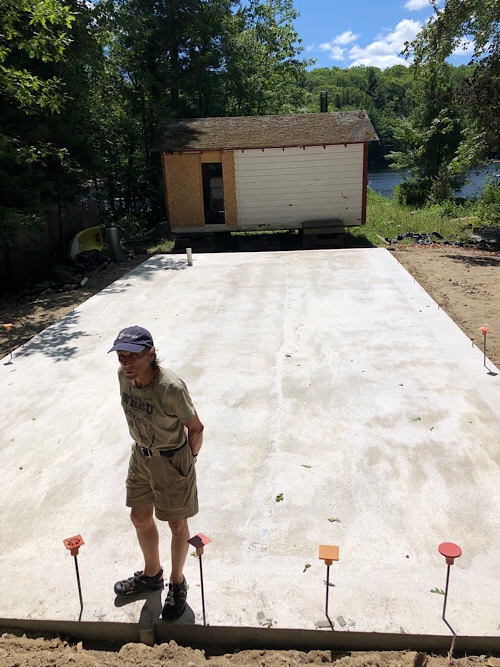
Camp, continued

our maine home – zone 5b

It looks like we are moving forward with the camp remodel.
We demolished the add-on bathroom. Now there’s a hole in the back wall.

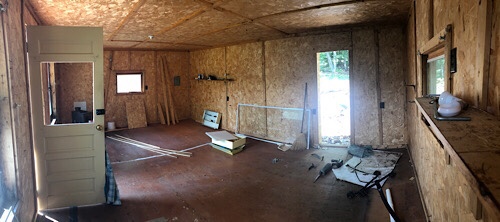
I have mixed feelings about this process.
I’m forever grateful to Ray Storman for selling us the camp. It was the anchor that got us to Maine.
Yet I have a really different vision of what I want it to be. I want to obliterate most traces of Ray’s ownership.
I feel guilty for being so overprivileged to have a summer camp. It will go to Sam’s son when we’re gone.
I’m impatient to get it done. But I won’t let myself be impatient. It will take as long as it takes.
I have vivid memories of staying there during the transition from Connecticut to Maine. With and without Sam. It was at once cozy and horrible.
The lake is so beautiful. Especially in the fall when it starts to get cold. I love it so much.
I want to be a good steward. But there’s so much building and overbuilding going on. Human presence does not feel trustworthy.
We don’t need the rental income. I think about offering camp stays to poets, writers, activists in need of respite. How would I do that? Is it safe there for everyone?
Two big improvements so far in the fruit yard: a new raised bed and a thick cover of wood chips for weed control. We got two huge dumps of wood chips free from a local tree service looking to get rid of them. Then Sam made many trips to deliver them over the fence into the fruit yard with the tractor, and raked them all out.
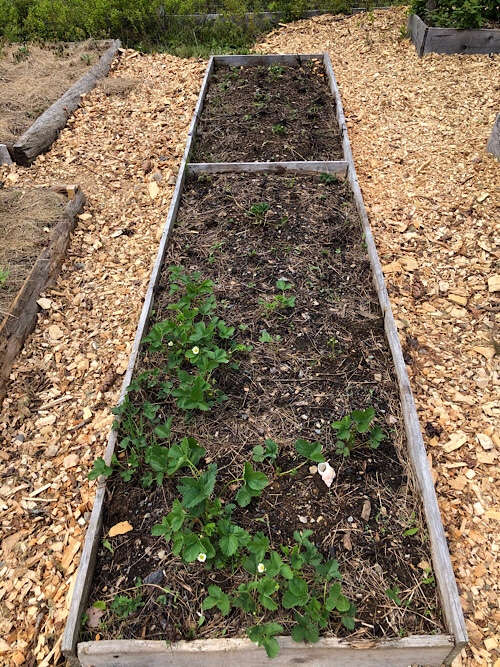
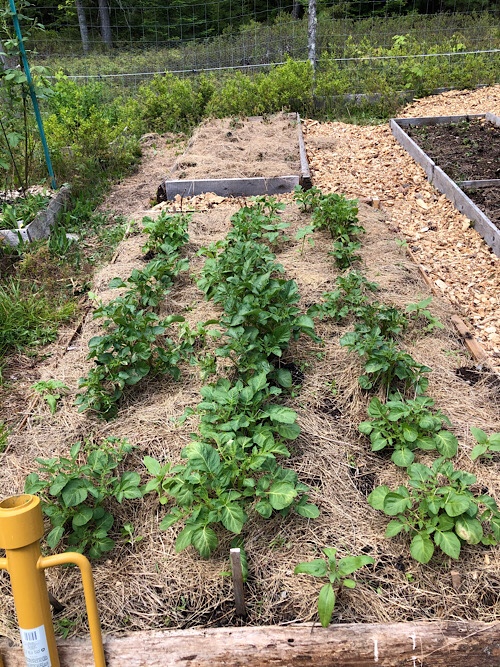
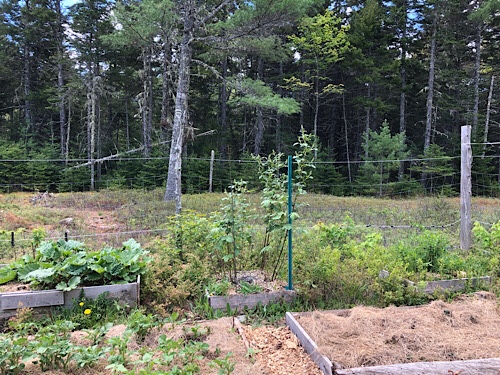
We inherited these next three long rows. They are so narrow – lots of wasted planting space 🙁
This area needs attention but it’s making slow progress.
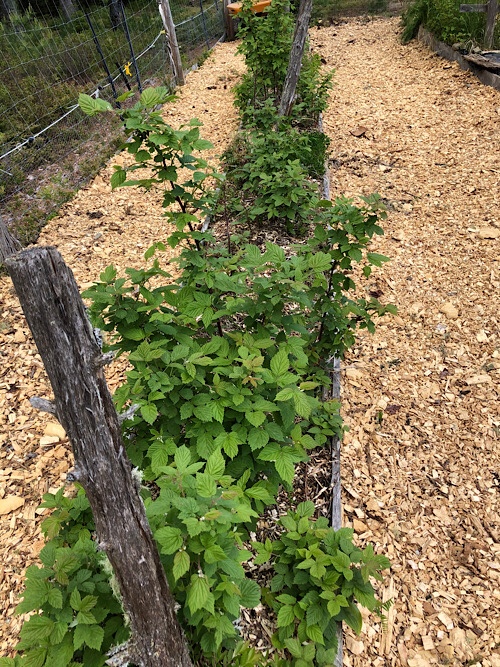
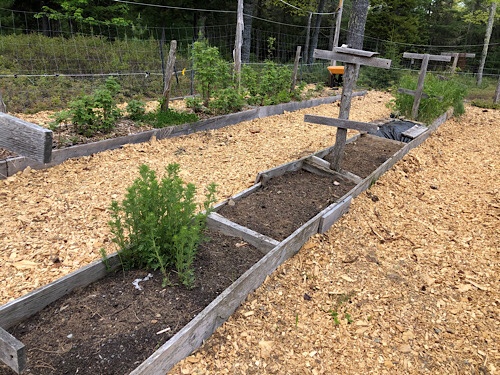

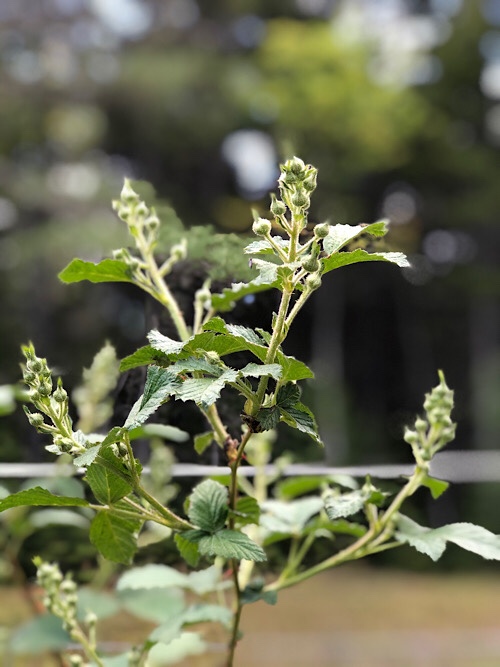
We don’t spend a lot of time in the fruit yard, but we do enjoy it. Maybe the wood chips under foot will make it less weedy, more pleasant. I’m really looking forward to a lush crop of berries someday.
I put the squash plants in at the community garden. Planting is done there! Now I’m waiting for the plants to do their thing while I nurture them as best I can.

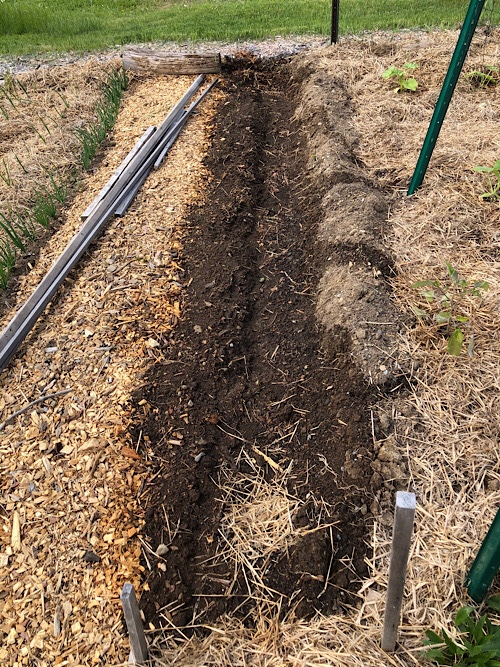
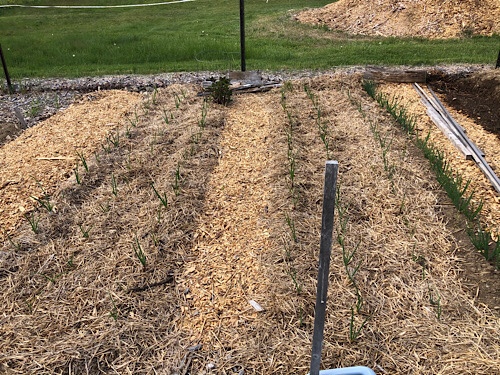
There’s also a nice perennial sunflower and echinacea plants, not in bloom yet.
I looked out the window and noticed the watering can sitting there next to the raised bed in the hoophouse. I need to notice these moments more often!
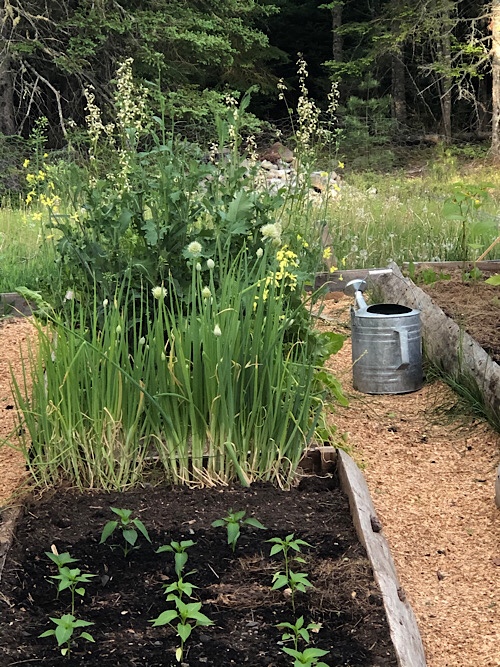
We will soon transition the hoophouse to its summer purpose — hothouse crops like peppers, basil, eggplants. Maybe a tomato, tomatillo, ground cherry.
It’s time to acknowledge that the hoophouse has been great this past winter for overwintering greens.
It’s work, but not a lot of work. We rarely watered the raised beds. We covered them with frost-protection cloth at night and removed it in the morning. We installed dowels in channels sewn at the edge of the cloth strips to make it easier to lift and drape the covers. We’ll have to decide how to enrich the soil in the beds before this coming August (when the hothouse crops will still be in there!).
Best overwintering varieties: claytonia, escarole, kale, winter lettuce, spinach, salanova lettuce, chard
Hesitating for various reasons: tatsoi, carrots, scallions, minutina
More short-lived, consider succession planting: mache, arugula
Give it a try: cilantro
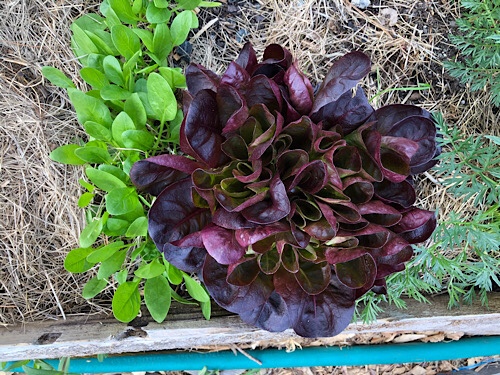
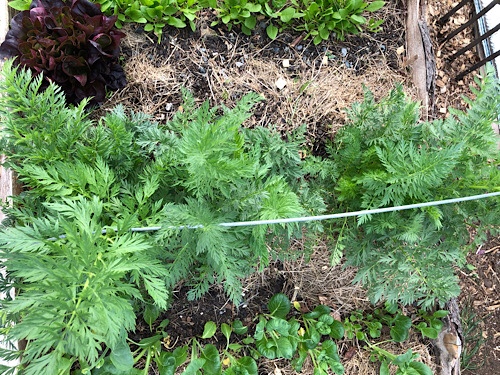
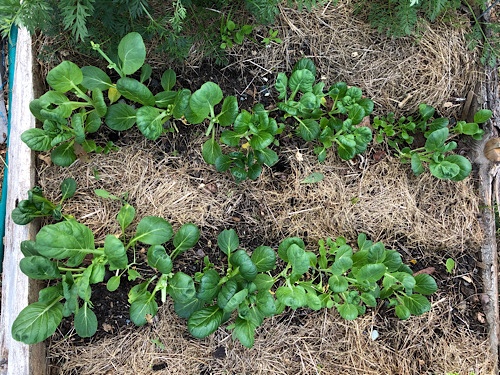
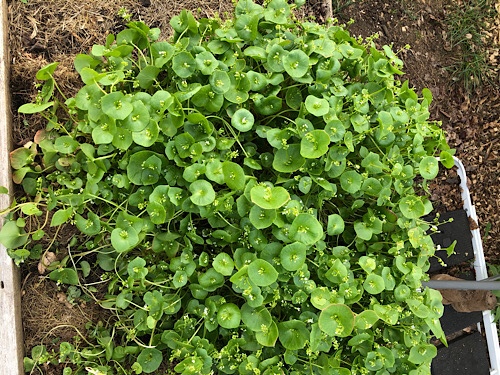
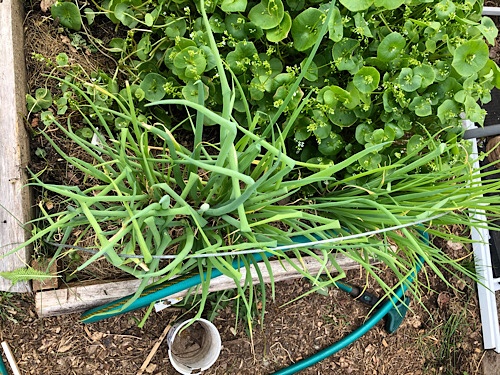


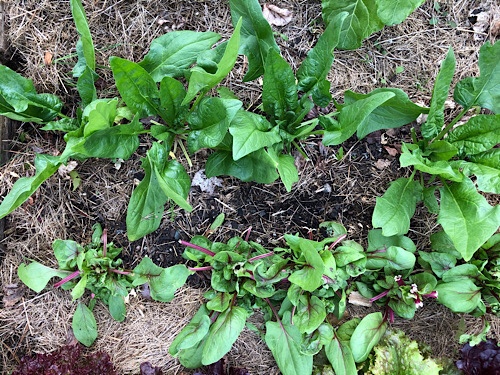
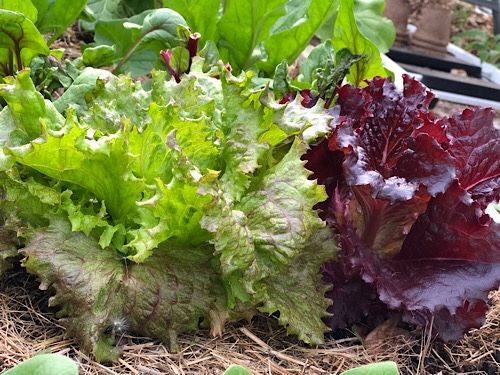
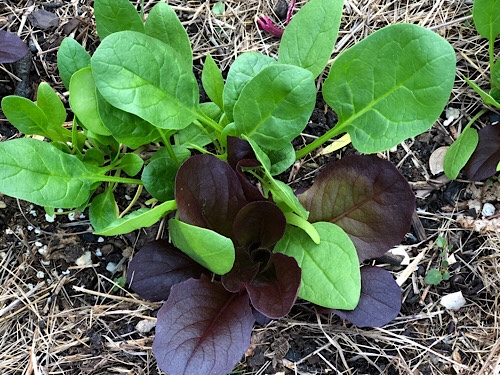

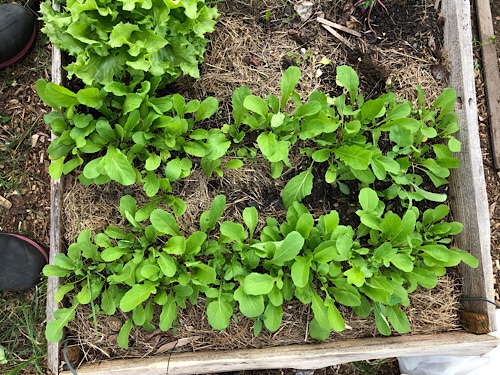
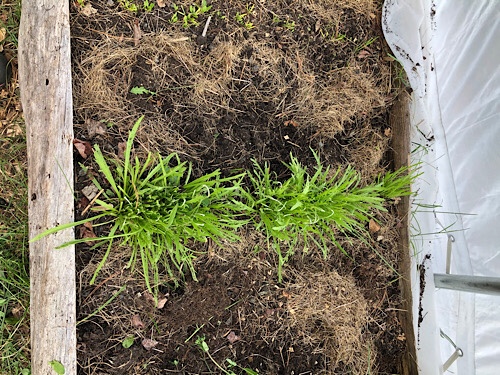
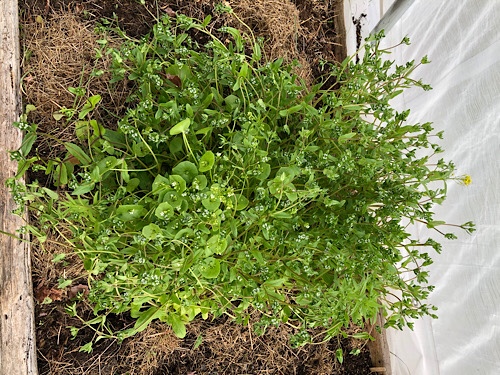

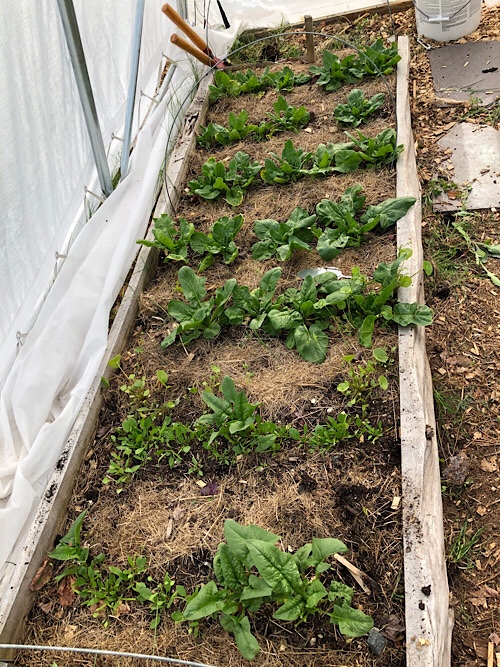
Not pictured: Mizuna, which grew okay in the fall but died out in mid-winter and had to be removed. I don’t think I’d grow it again as it took space away from better performers.
Snow was predicted earlier, but the forecast changed. And indeed we are getting rain, rain, and more rain and strong winds. A real snow melter.
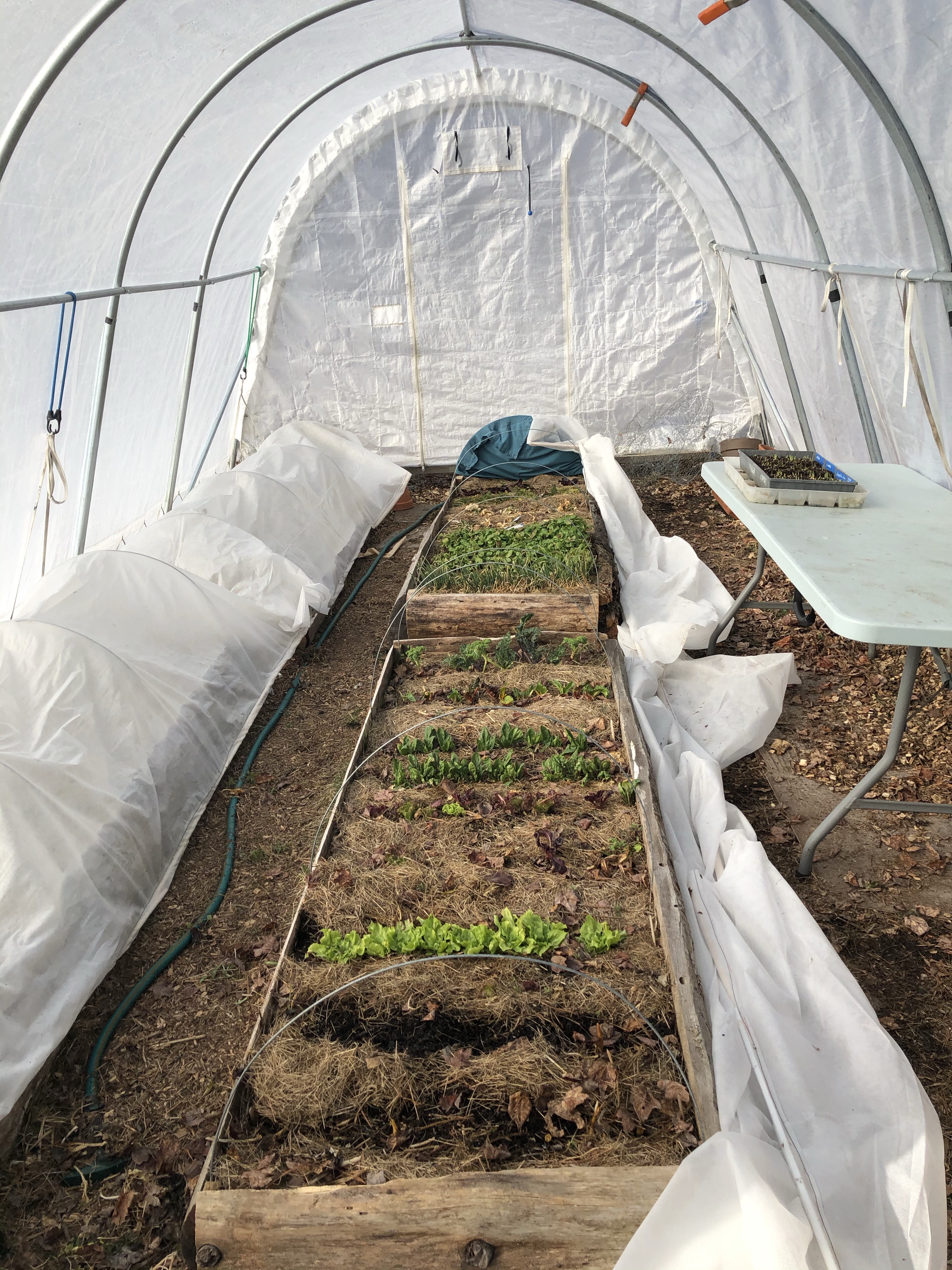
I thought it would be pleasant enough sheltered in the hoophouse but the temperature was somewhere in the 30’s and my hands became numb almost immediately.
Nevertheless I planted some arugula, Salanova lettuce, and tatsoi in some of the empty rows in the hoophouse. Sam watered them in with the hose. Now we are warming up inside.
Chickens have started laying again, sporadically.
Sam is interested in the temperature management inside the hoophouse where we are overwintering greens. Four seasons farming!
The hoophouse’s plastic cover does part of the job. Then there is an internal low hoop of heavy duty row cover over the raised beds. He has also hung silver-backed bubble wrap from the internal hoophouse frame to reflect light down onto the plants on sunny days.
To give an indication of the difference it makes on a cold day, I recorded some temperatures on February 9, 2020:
| Time | Conditions | Thermometer Location | Temperature |
| 6:30 am | Sunrise | Outside | 1 ℉ |
| In hoophouse | ? | ||
| Row cover down | At soil level | 19 ℉ | |
| 9 am | Sun | Outside | 8 ℉ |
| In hoophouse | 37 ℉ | ||
| Row cover down | At soil level | 28 ℉ | |
| 9:30 am | Sun | Outside | 9.3 ℉ |
| In hoophouse | 51 ℉ | ||
| Row cover raised | At soil level | 50 ℉ | |
| 11:00 am | Sun | Outside | 12 ℉ |
| In hoophouse | 72 ℉ | ||
| Row cover raised | At soil level | 71 ℉ | |
| 7:30 pm | Dark | Outside | 19 ℉ |
| In hoophouse | 20 ℉ | ||
| Row cover down | At soil level | 30 ℉ |
Conclusions:
Sam wants to automate the lifting of the row covers (and other aspects of this process when we get a greenhouse). But for now, it’s been an interesting science project and we are still eating a small amount of greens.
We did some work on the raised beds in the hoophouse today. Some were pretty much gone by and had to be cut back severely (arugula, mizuna). Others needed a trim, removal of dead tips and rotting base leaves. We got a bag of fresh greens for our trouble. Then tucked everybody back under their row covers. Supposed to drop into the teens tonight. The chickens got a bundle of clippings.
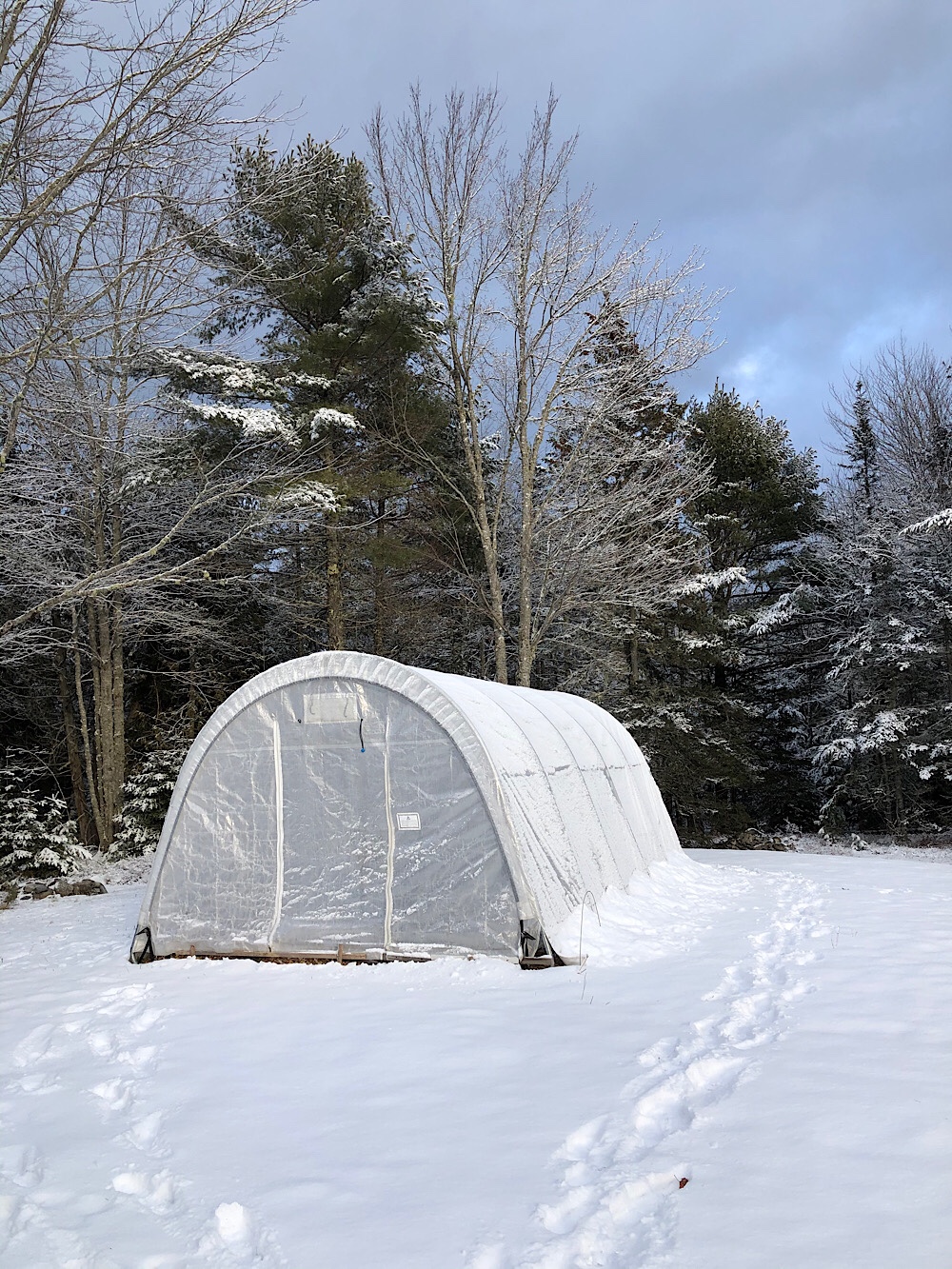
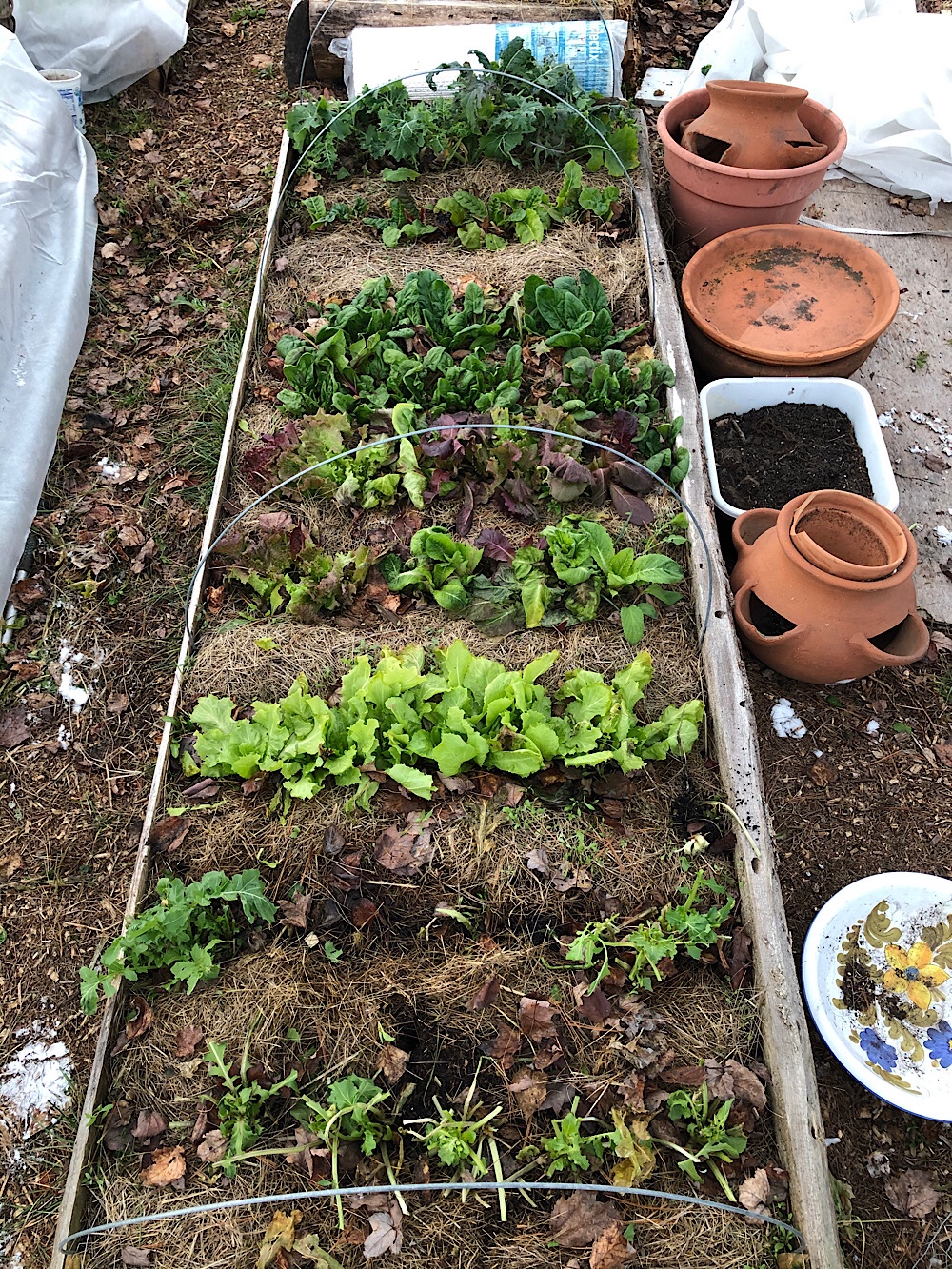
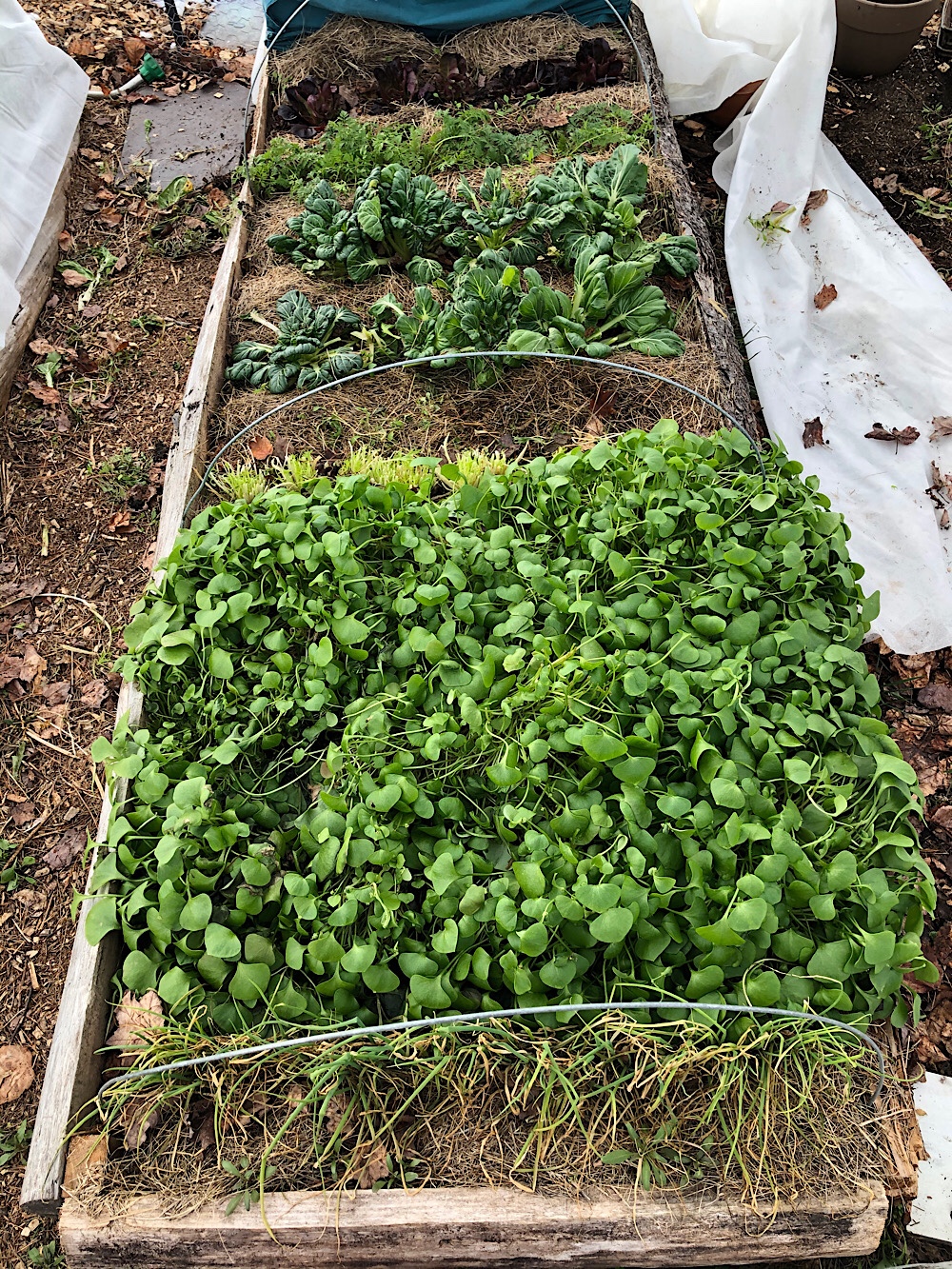
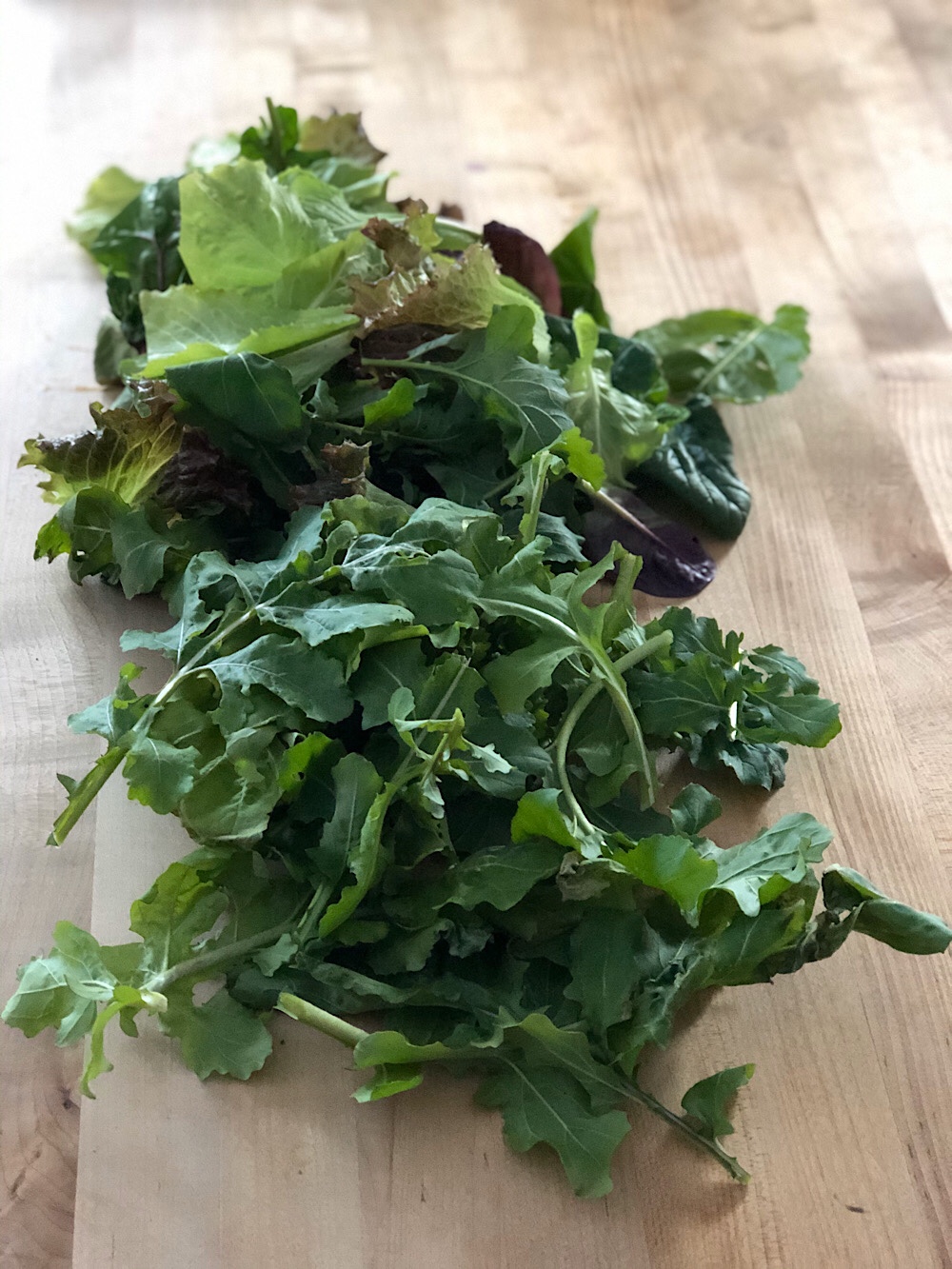
…the 1853 Ordnance Survey map of the islands, carried out by British surveyors who had anglicized the Gaelic place names and diminished the density of toponyms on the landscape.
Robert Macfarlane, The Old Ways, page 151
Reading this reminded me that I want to document that we live at “Sukie’s Elbow.”
This toponym is not written down anywhere that I’ve seen, not on a sign, not in the postal records, not even searchable on Google as of a minute ago. I heard the name from two different locals who popped up with it as I was laboriously explaining where we lived.
“Our driveway heads off to the left where Cross Road bends sharply…”
“oh, Sukie’s Elbow”
Neither time did I have the presence of mind to ask where that name came from, but next time it happens I will.
